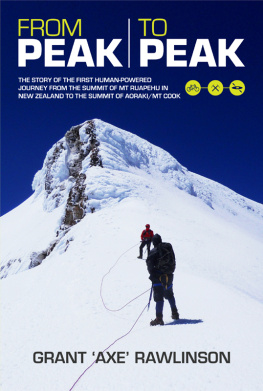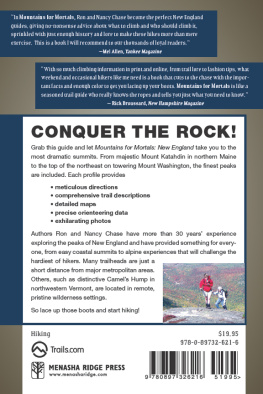Ed Buckingham - 7 Summits: 1 Cornishman Climbing the Highest Mountains on Each Continent
Here you can read online Ed Buckingham - 7 Summits: 1 Cornishman Climbing the Highest Mountains on Each Continent full text of the book (entire story) in english for free. Download pdf and epub, get meaning, cover and reviews about this ebook. genre: Non-fiction. Description of the work, (preface) as well as reviews are available. Best literature library LitArk.com created for fans of good reading and offers a wide selection of genres:
Romance novel
Science fiction
Adventure
Detective
Science
History
Home and family
Prose
Art
Politics
Computer
Non-fiction
Religion
Business
Children
Humor
Choose a favorite category and find really read worthwhile books. Enjoy immersion in the world of imagination, feel the emotions of the characters or learn something new for yourself, make an fascinating discovery.
- Book:7 Summits: 1 Cornishman Climbing the Highest Mountains on Each Continent
- Author:
- Genre:
- Rating:4 / 5
- Favourites:Add to favourites
- Your mark:
- 80
- 1
- 2
- 3
- 4
- 5
7 Summits: 1 Cornishman Climbing the Highest Mountains on Each Continent: summary, description and annotation
We offer to read an annotation, description, summary or preface (depends on what the author of the book "7 Summits: 1 Cornishman Climbing the Highest Mountains on Each Continent" wrote himself). If you haven't found the necessary information about the book — write in the comments, we will try to find it.
Ed Buckingham: author's other books
Who wrote 7 Summits: 1 Cornishman Climbing the Highest Mountains on Each Continent? Find out the surname, the name of the author of the book and a list of all author's works by series.
7 Summits: 1 Cornishman Climbing the Highest Mountains on Each Continent — read online for free the complete book (whole text) full work
Below is the text of the book, divided by pages. System saving the place of the last page read, allows you to conveniently read the book "7 Summits: 1 Cornishman Climbing the Highest Mountains on Each Continent" online for free, without having to search again every time where you left off. Put a bookmark, and you can go to the page where you finished reading at any time.
Font size:
Interval:
Bookmark:

mountains on each continent
mountains on each continent

Dedication
Chapter 1 The Roof of Africa
Chapter 2 Growing Up
Chapter 3 Aconcagua 2001
Chapter 4 Breaking Down on a Summit
Chapter 5 Alaska
Chapter 6 Unfinished Business
Chapter 7 The Himalaya
Chapter 8 Making a Comeback from Setbacks
Chapter 9 The Jewel in the Crown
Chapter 10 Pushing for Summit
Chapter 11 The Goal of Seven Summits
Chapter 12 The Waiting Game
Chapter 13 My Swansong
Chapter 14 My Fifteen-Year Degree
Chapter 15 Mud, Sweat and the Penis Gourd
Chapter 16 The True Seventh Summit
Acknowledgements
Photographs
This book is dedicated to those people who suffer from an undeserved illness. Children that are born or contract an illness at an early age. Consequently this has a detrimental effect on the way they live the rest of their lives. Also to those that have lived their lives without abusing their bodies and who work hard for the good of their families.
Never have I experienced this environment, culture and altitude.
Ed Buckingham
My trek to Kilimanjaro, Tanzania, in 1999, was like no holiday I had experienced before the poor hygiene, the food, the lack of privacy and experiencing the culture of a developing country were all challenges I had to face. Kilimanjaro is best known for being climbable for those with little more than walking experience. It is the easiest of the seven continental summits and an increasing number of climbers and walkers travel to Africa with this in mind.
Kilimanjaro is very much like an island surrounded by the hot and dry plains of the Masai. From Kilimanjaros base, the mountain rises 5,985 metres to its icy summit quite a challenge for somebody coming from a county where the highest tor is Brown Willy, which stands at 420 metres, a mere pittance in comparison. Kilimanjaro sits inside Tanzania, bordering Kenya 400 kilometres south of the equator. It is widely believed that Queen Victoria gave the mountain to her German grandson, Kaiser Wilhelm II, which explains the curve in what is otherwise a ruler-straight border between the two countries. As Tanzania, formerly known as Tanganyika, then became a part of German East Africa, German colonials were the first to explore Kilimanjaro. When World War One ended in 1918, the mountain became a British asset once again until Tanganyika became independent in 1961. In 1964, Tanganyika became part of the United Republic of Tanganyika and Zanzibar, and changing its name to the United Republic of Tanzania within a year.
The vast slopes of Kilimanjaro are fairly unusual as they pass through many different climatic worlds. On Kibo, the highest volcanic cone, climbers travel through tropical rainforest, heathland, desert and finally tundra before reaching the ice-bound summit, all in the space of a few days. The best times to climb Kilimanjaro are between December and early March, and from June to October. This is so that climbers miss two rainy seasons. It is imperative that climbers are prepared for cold weather and sudden storms because higher up it becomes very cold, especially from June to August, which is the East African winter. It often becomes very windy and the temperatures reach as low as minus ten degrees.
The summit of Kibo rises steeply for 180 metres from the floor of the caldera. Uhuru is the apex of the great southern glaciers that spill down the south side of Kibo, providing some of the most challenging climbs. Between the Western Breach (Arrow Glacier) Route and the Heim Glacier is the Breach Wall, a 600-metre precipice of crumbling overhanging rock, which is considered to be the hardest route on Kilimanjaro.
On the opposite side of the mountain is the Northern Icefield, a single expanse of ice that drapes over the crater rim. Its shimmering whiteness is visible high above the Amboseli National Park in neighbouring Kenya. Other glaciers lurk languidly in the shallow crater, like beached whales hopelessly waiting for the next ice age to secure their survival. All of the glaciers on Kilimanjaro are in retreat and some have disappeared altogether. Like much of Africa the records of human activity on Kilimanjaro begin with the arrival of missionaries whose travels took them on to the mountain in the nineteenth century. Of course, it may well have been climbed by these early residents of the region. Undoubtedly, the great volcano with its strange white cap would have been entangled with the native superstitions and folklore. In 1887 missionary, Charles New, became the first to reach snow on Kilimanjaro when he climbed to the saddle between Kibo and Mawenzi. The first actual ascent to Uhuru Peak (then named Kaiser Wilhelm Spitze) was made in 1889, by German Geologist Hans Meyer, Austrian mountaineer Ludwig Purtscheller, and a local man called Lauwo.
There are six moorland approaches to the base of Kibo. They are Marangu, Mweka, Umbwe, Machame, Shira and Rongai, but only Marangu, otherwise known as the Tourist Route, takes a climber all the way to Uhuru Peak, ascending slowly for 1,182 metres. All of the other routes lead to the Kibo Circuit Path, which joins the rest of the routes to the summit. As well as Marangu, there are other climbs that do not require technical mountaineering skills such as the Barafu and the Western Breach route, however, the latter can be extremely difficult when covered in snow.
We climbed in September to avoid the rainy seasons, taking the Machame route up and descending down Mweka on a nine-day trek. This was the longest route but it allowed our bodies more time to acclimatise. We took the walk high, sleep low approach. Given where I came from, high altitude was outside my experience. Walking at high altitude affects people in many different ways, regardless of a persons fitness and mountaineering knowledge. Decreased oxygen concentration in the blood, caused by the lower atmospheric pressure found at higher elevations, creates oedema, the swelling and pooling of body fluid. When this occurs in the brain or lungs, the results can be devastating. The best cure for any onslaught of altitude sickness is to descend quickly, to a point where the air is thicker with oxygen.
Kibo, Mawenzi and Shira are Kilimanjaros three peaks. Kibo is the highest with its recognisable volcanic cone. Its summit crater is some 2,500 metres across. Its this feature where the majority of climbs are done. East of Kibo stands the jagged spire of Mawenzi, the second highest peak, which also offers numerous rock-climbs. The third peak is Shira, lying to the west of Kibo. It is so eroded that it is little more than a plateau of rolling heathland. Kibos crater rim is intact except for the mighty slit of the Western Breach and much smaller notches on the eastern side. These notches provide the easiest access to the crater and rim.
Ludwig Purtscheller and Johannes Korner opened the ever-popular tourist (Marangu) route in 1898. The Kibo Hut, built in 1932, offered shelter to many an adventurer and its location, at 4,700 metres, made it instrumental in the increase in tourism. There are a multitude of huts in the area today and also lower down the trail at Mandara and Horombo. The first ascent of the Western Breach was made in 1953 by a University of Sheffield team. In 1957, A. Nelson, H. Cooke and D. Goodall made the first ascent of the classic Heim Glacier Route. Most of the other major lines were climbed during the 1970s, mainly by the visiting teams from the mountain clubs of Kenya. In 1978, Reinhold Messner along with Konrad Renzler climbed the formidable Breach Wall direct route.
Next pageFont size:
Interval:
Bookmark:
Similar books «7 Summits: 1 Cornishman Climbing the Highest Mountains on Each Continent»
Look at similar books to 7 Summits: 1 Cornishman Climbing the Highest Mountains on Each Continent. We have selected literature similar in name and meaning in the hope of providing readers with more options to find new, interesting, not yet read works.
Discussion, reviews of the book 7 Summits: 1 Cornishman Climbing the Highest Mountains on Each Continent and just readers' own opinions. Leave your comments, write what you think about the work, its meaning or the main characters. Specify what exactly you liked and what you didn't like, and why you think so.









